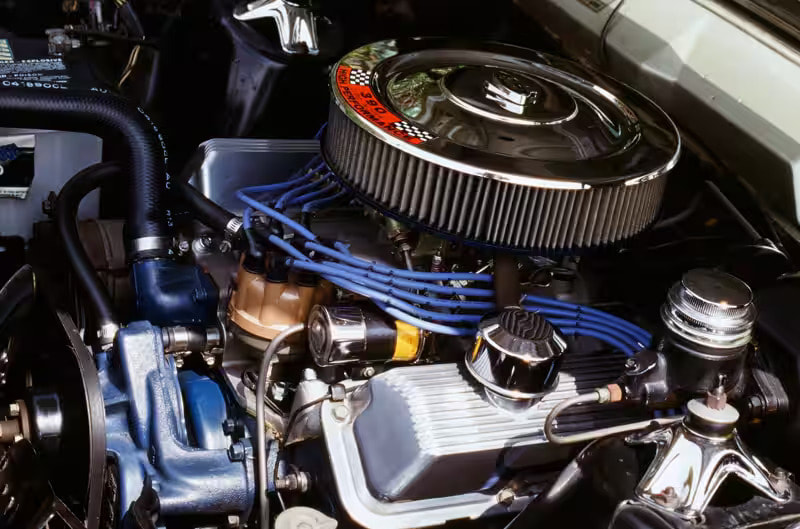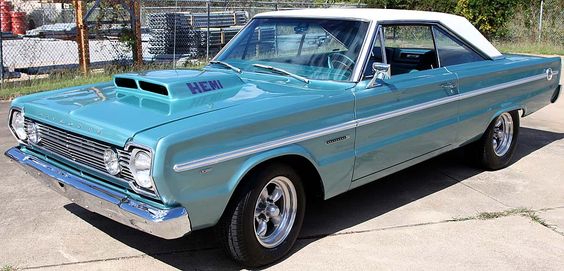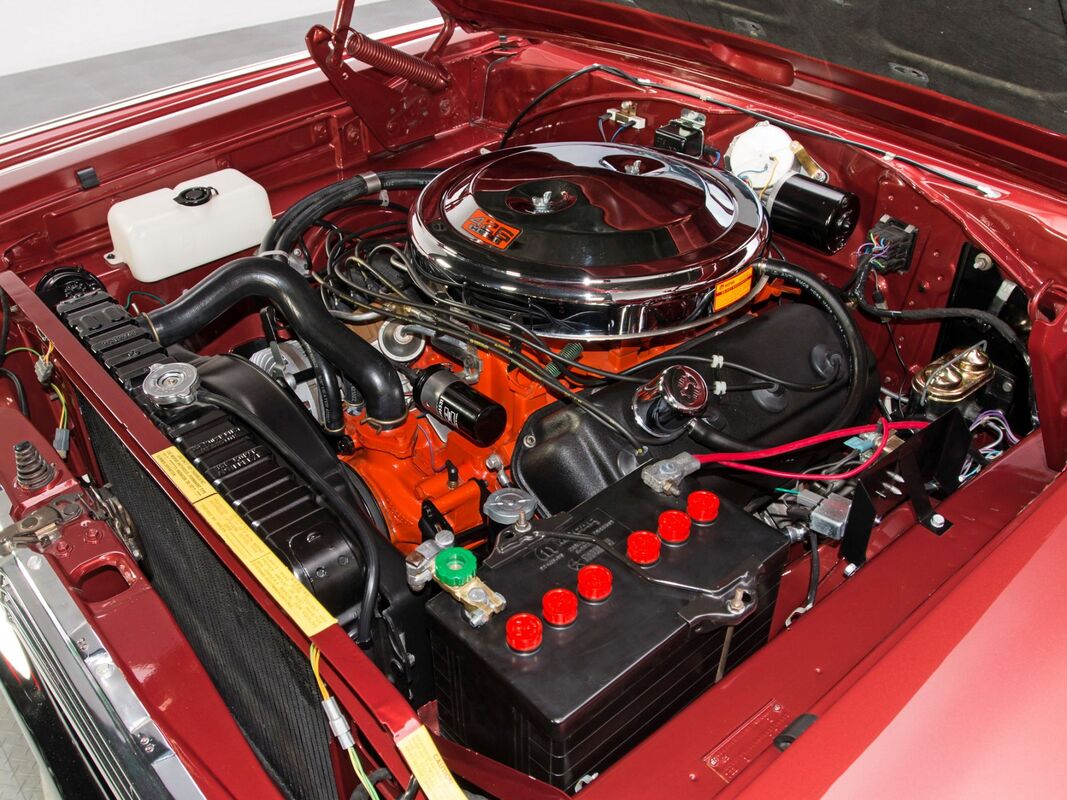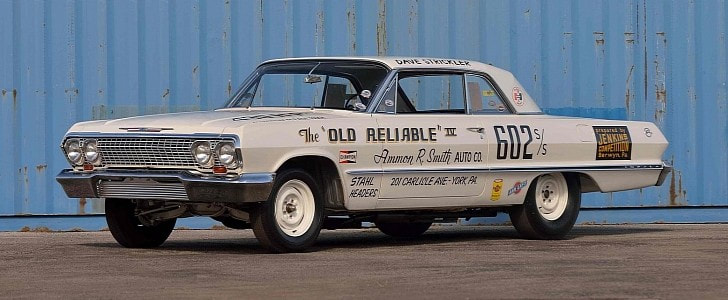|
In the world of classic cars, few models hold the same level of reverence as the Buick GS. Launched in 1965, the Gran Sport line quickly became synonymous with power, performance, and luxury. By the time the Class of 1972 rolled around, the Buick GS had firmly established itself as one of the premier muscle cars of its era.
With a sleek, aerodynamic body and a powerful V8 engine, the Buick GS was a force to be reckoned with on the streets. The 1972 model year saw the introduction of the Stage 1 performance package, which included a high-performance engine tune, upgraded suspension components, and distinctive exterior styling cues. This made the GS one of the most sought-after muscle cars of the time, both on and off the track. The 1972 Buick GS was a true driver's car, with responsive handling and an exhilarating driving experience. The interior was equally impressive, with plush seating, upscale materials, and a host of modern conveniences. Whether you were cruising down the highway or tearing up the drag strip, the Buick GS offered a level of comfort and performance that few other cars could match. Today, the Buick GS remains a highly prized collector's item, with enthusiasts around the world seeking out well-preserved examples for their own. With its timeless design, powerful engine, and undeniable presence, the Class of 1972 Buick GS continues to captivate car lovers of all ages. Whether you're a seasoned collector or a newcomer to the world of classic cars, the Buick GS is a must-have addition to any automotive enthusiast's collection.
0 Comments
The 1969 Hurst/Olds Convertible is a classic car that is sure to turn heads. It is a limited-edition vehicle that was produced in limited numbers and is highly sought after by collectors and car enthusiasts alike. The Hurst/Olds was a collaboration between Oldsmobile and Hurst Performance, and the result was a vehicle that was powerful, stylish, and luxurious.
The Hurst/Olds was powered by a 455-cubic-inch V8 engine that produced 360 horsepower and 500 lb-ft of torque. This engine was mated to a three-speed Turbo Hydra-Matic transmission and had a top speed of 130 MPH. The Hurst/Olds was also equipped with a limited-slip differential and power steering. The exterior of the Hurst/Olds was designed to be eye-catching and luxurious. It was finished in a gold and black paint scheme with gold striping and a black vinyl top. The interior was finished in black leather and featured a center console, power windows, and air conditioning. The Hurst/Olds also featured a special Hurst shifter and a set of unique wheels. The 1969 Hurst/Olds Convertible is a special vehicle that is sure to be a hit with any car enthusiast. It is a classic car that combines power, luxury, and style in one package. The Hurst/Olds is a limited-edition vehicle that is highly sought after by collectors and car enthusiasts alike. If you are looking for a classic car that is sure to turn heads, the 1969 Hurst/Olds Convertible is a great choice. The 1967 Shelby GT 500 427 is a classic muscle car that has been a favorite of car enthusiasts for decades. With its powerful engine, sleek design, and impressive performance, it’s easy to see why.
The 427 cubic inch V8 engine that powers the GT 500 was the most powerful engine in the Shelby lineup at the time. It was capable of producing an impressive 425 horsepower and 480 lb-ft of torque. This engine was paired with a 4-speed manual transmission, making it a blast to drive. The Shelby also featured a unique suspension setup with heavy-duty shocks and springs, as well as a larger stabilizer bar and wider tires. This setup gave the car a great balance of performance and handling. The exterior of the Shelby GT 500 was also quite impressive. It featured a unique front grille and a hood scoop, both of which were designed to help cool the engine. The car also featured a unique set of side-exit exhaust pipes, which gave it a distinctive look. The car was available in a variety of colors, including black, blue, and red. The interior of the Shelby GT 500 was also quite luxurious. It featured leather seats, power windows, and air conditioning. The Shelby also had a unique instrument panel that featured a tachometer, speedometer, and other gauges. Today, the 1967 Shelby GT 500 427 is a highly sought-after classic. It is a great car for car enthusiasts who want a classic muscle car with plenty of power and style. It is a car that is sure to turn heads wherever it goes. In the pulse of the mid-'60s, Ford introduced the 1966 Fairlane GTA, a car that redefined the fusion of style and power. This wasn't just an automobile; it was a dynamic force on the asphalt, delivering a compelling performance without compromising on sophistication.
At the core of the Fairlane GTA resided a potent 390 cubic-inch V8 engine. Generating a robust 335 horsepower and 427 lb-ft of torque, this powerhouse propelled the Fairlane from 0 to 60 mph in a mere 6.5 seconds. The GTA wasn't just about acceleration; it was a seamless blend of speed and precision, a testament to Ford's commitment to delivering a thrilling driving experience. Draped in the sleek Fairlane exterior, the GTA exuded an air of sophistication. Subtle yet impactful, the GTA showcased its performance prowess without the need for ostentatious embellishments. The distinctive GT badging hinted at the latent power beneath the refined surface. On the open road, the Fairlane GTA wasn't just a car; it was a performance-oriented machine. The finely tuned suspension and handling ensured a responsive and agile ride, making every curve an opportunity for exhilaration. The GTA wasn't designed to merely traverse roads; it was crafted to dominate them. As we shift to the present, the 1966 Ford Fairlane GTA remains a symbol of a bygone era where muscle cars were more than just powerful engines. The GTA stands as a testament to Ford's dedication to delivering a thrilling driving experience without compromising on style and sophistication. It wasn't just a car; it was a dynamic statement on the roads. In the annals of American muscle cars, the 1968 Yenko 427 Camaro stands as a titan, a raw expression of power that left an indelible mark on the asphalt. This wasn't just a Camaro; it was a symphony of performance, meticulously crafted by Yenko to dominate both the street and the track.
The heartbeat of the Yenko 427 Camaro was the formidable 427 cubic-inch V8 engine. With a commanding 425 horsepower and 460 lb-ft of torque, this powerhouse propelled the Camaro from 0 to 60 mph in a mere 5.3 seconds. The Yenko Camaro wasn't just about acceleration; it was a lightning bolt on four wheels, tearing down the road with an authority that demanded attention. Dressed in a sleek Camaro shell, the Yenko 427 exuded an air of sophistication blended with unadulterated muscle. The subtle Yenko badging hinted at the beast beneath, while the performance-oriented suspension and brakes ensured that every twist and turn were conquered with precision. When it came to the drag strip, the Yenko 427 Camaro was a force to be reckoned with. Quarter-mile times were not just impressive; they were a declaration of dominance, solidifying the Yenko's place in the hierarchy of American muscle cars. As we shift gears to the present, the 1968 Yenko 427 Camaro remains more than a classic; it's a symbol of an era where power wasn't just a statistic but a visceral experience. The Yenko Camaro wasn't just a car; it was a statement, a reminder that some vehicles are designed not just for transportation but to leave an everlasting imprint on the road. In the automotive chronicles of the mid-'60s, one car emerged as a defining force – the 1965 Pontiac GTO Convertible in Tiger Gold. This convertible wasn't just a car; it was a bold proclamation of Pontiac's commitment to performance and style.
At the heart of the GTO Convertible was a 389 cubic-inch V8 engine, churning out an impressive 360 horsepower and 424 lb-ft of torque. This wasn't just about power; it was about a commanding presence on the road. The GTO sprinted from 0 to 60 mph in just 6.6 seconds, a testament to its prowess in speed and acceleration. Cloaked in the distinctive Tiger Gold hue, the GTO Convertible was a visual stunner. The sleek lines and the convertible top added a touch of sophistication to its muscular build. This wasn't just a car; it was a work of art on wheels, a statement that style could coexist with raw power. When it came to the open road, the GTO Convertible wasn't just a cruiser; it was a performance juggernaut. The quarter-mile times were a mere formality for this convertible, conquering the stretch with an authority that solidified its place in the annals of American muscle car history. Fast forward to today, and the 1965 Pontiac GTO Convertible in Tiger Gold remains a symbol of an era where cars weren't just about transportation; they were about making a statement. The GTO Convertible wasn't just a car; it was a roar echoing through time, a reminder that some classics are timeless not just for their design but for the raw power they bring to the asphalt. In the heart of the 1960s, Plymouth introduced a true titan to the American roads – the 1966 Plymouth Belvedere II 426 Hemi. This powerhouse wasn't just a car; it was a raw manifestation of unbridled American muscle.
At its core was the formidable 426 cubic-inch Hemi V8 engine, a juggernaut in the world of performance. Boasting an impressive 425 horsepower and 490 lb-ft of torque, the Belvedere II was a force to be reckoned with, propelling itself from 0 to 60 mph in a blistering 5.3 seconds. This was more than a vehicle; it was a declaration of Plymouth's commitment to dominating both the drag strip and the streets. The exterior design of the Belvedere II was a blend of sleek elegance and muscularity. The iconic grille, chrome accents, and subtle yet distinctive lines added a touch of sophistication to its dominating presence. It wasn't just a car; it was a visual statement, turning heads wherever it went. What truly set the Belvedere II apart was its performance on the drag strip. This wasn't a car content with just speed; it was engineered to conquer the quarter-mile, leaving competitors in the dust with impressive times that solidified its legendary status. Fast forward to today, and the 1966 Plymouth Belvedere II 426 Hemi remains an enduring symbol of a bygone era of American muscle. It's more than a classic; it's a reminder of a time when cars weren't just transportation; they were powerful machines designed to leave an indelible mark on the asphalt. In the heart of the 1960s, a legend roared onto the scene, leaving an indelible mark on the asphalt - the 1965 Shelby G.T. 350. This wasn't merely a car; it was a symphony of power, precision, and pure performance that echoed through the corridors of automotive history.
At the core of the G.T. 350's prowess was a finely tuned 289 cubic-inch V8 engine. Carroll Shelby, the maestro behind this masterpiece, didn't just create power; he orchestrated it. With an output of around 306 horsepower and 329 lb-ft of torque, the G.T. 350 wasn't for the faint of heart. It was a thoroughbred racer, sprinting from 0 to 60 mph in just 6.6 seconds – a blistering speed that made it a force to be reckoned with on both the track and the streets. What truly set the G.T. 350 apart was its handling. The suspension was finely tuned for performance, making every curve an opportunity for exhilaration. Back in '65, this car wasn't just about straight-line speed; it was about dominating every twist and turn with precision and grace. And let's not forget the unique touches Shelby added to the G.T. 350. From the signature Cobra emblem to the racing stripes that adorned its sleek exterior, every detail was a testament to its racing heritage. This car wasn't just about acceleration; it was a visual and auditory feast for enthusiasts who craved both style and substance. As we fast forward to today, the 1965 Shelby G.T. 350 remains a shining example of a time when muscle cars weren't just about raw power; they were about crafting an experience. The G.T. 350 was, and still is, a rolling tribute to the harmonious blend of speed, style, and performance that defined an era of American automotive excellence. Cruising down memory lane takes us to the early '60s, where the asphalt echoed with the thunderous roar of the 1963 Chevrolet Z11. In the realm of muscle cars, the Z11 stood as a beacon of power and speed, leaving an indelible mark on the golden era of American automotive prowess.
As I recall, the Z11 was not your average Chevy. This beast was a purpose-built drag racing machine, designed for one thing and one thing only – dominating the quarter-mile. Sporting a lightweight frame and a massive 427 cubic-inch V8 engine under the hood, the Z11 was a force to be reckoned with on the strip. Its sleek, aerodynamic design sliced through the air, and when that V8 roared to life, it was a symphony of pure adrenaline. Taking a closer look, the Z11 wasn't just about power; it was a work of art on wheels. The distinctive cowl induction hood, the bold racing stripes, and the unmistakable Chevrolet bowtie proudly displayed on the grille – every detail screamed performance. Back in the day, seeing a Z11 at the drag strip was like witnessing a modern-day knight gearing up for battle, ready to conquer the asphalt with sheer muscle and determination. The Z11 was a limited-edition model and only a few hundred were ever produced. As such, these cars have become highly sought-after by collectors and enthusiasts alike. The car's rarity and performance make it an extremely desirable vehicle and one that will continue to be a prized classic for years to come. Fast forward to today, and the legend of the 1963 Chevrolet Z11 lives on in the hearts of muscle car enthusiasts. It's not just a car; it's a symbol of an era when the open road beckoned, and the thrill of the ride was matched only by the roar of a powerful engine. The Z11 stands tall as a testament to a time when muscle cars ruled the streets and left an everlasting imprint on the soul of American automotive history. |



















